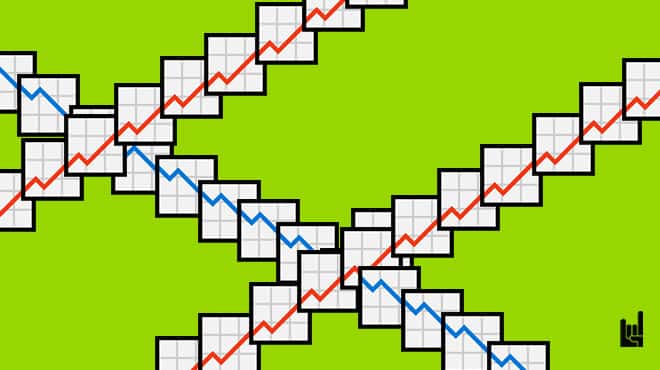Are you looking to learn more about growth hacking or even become a growth hacker?
There are a few different ways to do so, like reading growth hacking blogs.
No matter how tech-focused the industry is, let us not forget about growth hacking books, even if they are on the analog side of things.
In this list, we’ve included our top growth hacking reads – some of the absolute classics, as well as some of the newest publications on the subject.
Enjoy!
1. Hacking Growth
How Today’s Fastest-Growing Companies Drive Breakout Success
Authors: Sean Ellis & Morgan Brown | Published: 2017 | Pages: 345

If you know anything about growth hacking, you’ve probably heard of Sean Ellis. Sean is responsible for the term ‘growth hacking’, as he coined it a decade ago. If you don’t know anything about growth hacking, then that’s alright – this book is for you! The “godfather of growth hacking” co-wrote the book with Morgan Brown. Among other things, Morgan is a growth and product executive. Currently, he is Facebook’s director of Product. Together they wrote one of the must-have growth hacking books.
The book is divided into two parts. In the first part, you will learn what growth hacking is all about, what methods growth hacking uses, and what are its processes. The second part is basically a playbook. This is where you will discover how to apply the methods and processes of the first part to your business – regardless of your industry – and get the most out of the 4 growth stages (Acquisition, Activation, Retention, Monetization).
Hacking Growth is a must-read for any marketer and entrepreneur, and especially for those working on SaaS products, and SaaS agencies. It’s easily readable, and content-dense, with tons of practical takeaways for the reader. As one of the best growth hacking books, will spark many ideas for your own company that you’ll want to put in use immediately.
| Part I: The Method | Part II: The Growth Hacking Playbook |
|---|---|
| Chapter One: Building Growth Teams | Chapter Five: Hacking Acquisition |
| Chapter Two: Determining if your Product is Must-Have | Chapter Six: Hacking Activation |
| Chapter Three: Identifying your Growth Levers | Chapter Seven: Hacking Retention |
| Chapter Four: Testing at High Tempo | Chapter Eight: Hacking Monetization |
| Chapter Nine: A Virtuous Growth Cycle |
2. The Growth Handbook
Brought to you by Intercom
Authors: Des Traynor, Karen Peacock, & Andrew Chen | Published: 2018| Pages: 79
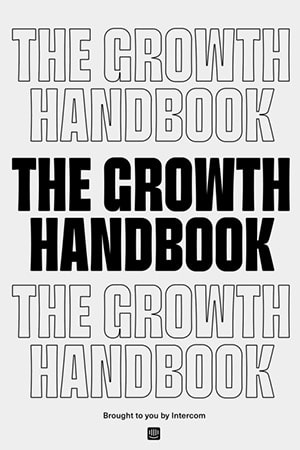
Andrew Chen is one of the first thought leaders in the growth hacking scene. In 2012, he explained why a ‘Growth Hacker is the new VP Marketing’. He led Uber’s Rider Growth product team. Today, he is a general partner of a venture capital firm in Silicon Valley. Along with the team from Intercom, and a few veterans from the industry, who have grown businesses like AtlassianAlassian, Slack, and Pinterest, they provide tested frameworks, valuable tips, and priceless observations through this book.
The authors and contributors share their thoughts on why Retention is more important than Acquisition. Spoiler alert: It has to do with the current subscription-based economy. Additionally, you will learn how to make valid growth experiments and what are the common mistakes to avoid.
You will be able to answer questions like: How do I calculate my gross and net churn? Why every business needs a mechanism for free acquisition? How do I acquire the right “breed” of customers? How do I find my product’s magic moment? And -you won’t see this one coming- what is the law of shitty clickthroughs?
| Chapter 1 | Chapter 2 | Chapter 3 | Chapter 4 | Chapter 5 | Chapter 6 |
|---|---|---|---|---|---|
| Acquisition | Activation | Retention | Monetization | Testing & Optimization | Metrics & Measurement |
3. Traction
How Any Startup Can Achieve Explosive Customer Growth
Authors: Gabriel Weinberg & Justin Mares | Published: 2015 | Pages: 240
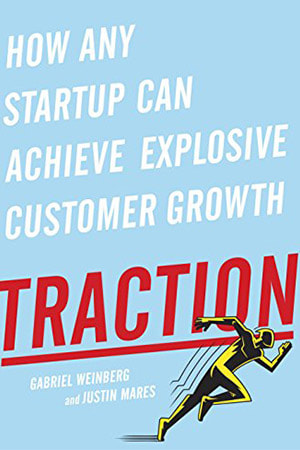
Traction is written by two very successful entrepreneurs, Gabriel Weinberg and Justin Mares. The former is the CEO and founder of DuckDuckGo, one of the most popular alternative search engines. The latter is the founder of several successful startups.
Traction is written with every startup in mind. Why do some startups fail when others succeed? According to the book, most startups don’t fail because they can’t build a product. Rather, they fail because they can’t get traction. In other words, new customers and users. As the writers put it, “traction trumps everything”.
The book not only broadens the reader’s horizons in the business field, but it also offers actionable insights and guidance. What’s more, the authors draw on interviews with founders from successful companies, like Reddit, Hubspot, and Wikipedia. They will also talk the reader through the 19 traction channels. Which one should you pick for your company and how can you make the most out of them? To answer that, the reader will find a three-step framework called Bullseye. Overall, Traction offers a vast wealth of knowledge, tactics, facts, and opinions that can benefit your startup.
| Traction Channels | Viral Marketing | Search Engine Optimization | Business Development | Offline Events |
| The Bullseye Framework | Public Relations (PR) | Content Marketing | Sales | Speaking Engagements |
| Traction Thinking | Unconventional PR | Email Marketing | Affiliate Programs | Community Building |
| Traction Testing | Search Engine Marketing | Engineering As Marketing | Existing Platforms | Afterword |
| Critical Path | Social & Display Ads | Targeting Blogs | Trade Shows |
4. Product-Led Growth
How to Build a Product That Sells Itself
Author: Wes Bush | Published: 2019 | Pages: 276
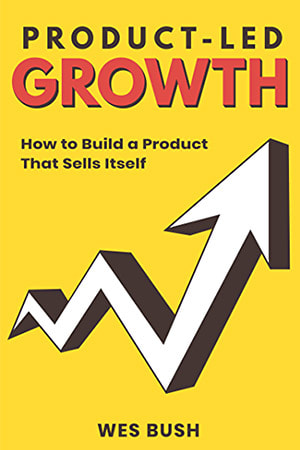
Wes Bus may be relatively new in the growth marketing scene but he has already established a strong presence. He is the co-host of the ‘Product-led podcast’, creator of the ‘Product-led 6-week course’ and author of Product-Led Growth: How to Build a Product That Sells Itself.
That’s dandy and everything, but what on earth is ‘product-led’, I can hear you asking. The term ‘product-led growth’ was coined by Open View Partners, a VC firm from Boston, a few years back. According to the firm, “Product Led Growth (PLG) is an end user-focused growth model that relies on the product itself as the primary driver of customer acquisition, conversion, and expansion.” In other words, product-led growth places the product at the center of the customer’s journey. Thus the product itself, rather than the sales or marketing, becomes the mechanism through which the company will acquire, activate, and retain customers.
In his book, Wes will talk the reader through the concept of product-led growth strategy, given that it makes sense for their business in the first place. What’s more, you will answer questions like: Which of the SaaS pricing strategies is the only one with long-term viability? What are the 7 roles that a product-led growth team needs to have? And how do you stop customer churn?
| Part I: Design Your Strategy | Part II: Build Your Foundation | Part III: Ignite Your Growth Engine |
|---|---|---|
| Chapter 1: Why is Product-Led Growth of Rising Importance? | Chapter 7: Build a Product-Led Foundation | Chapter 12: Develop an Optimization Process |
| Chapter 2: Choose Your Weapon: Free Trial, Freemium, or Demo? | Chapter 8: Understand Your Value | Chapter 13: The Bowling Alley Framework |
| Chapter 3: Ocean Conditions: Are You in a Red -or Blue- Ocean Business? | Chapter 9: Communicate Your Value | Chapter 14: Increase Your Average Revenue Per User (ARPU) |
| Chapter 4: Audience: Do You Have a Top-Down or Bottom-Up Selling Strategy? | Chapter 10: Deliver on Your Value | Chapter 15: Slay Your Churn Beast |
| Chapter 5: Time-to-Value: How Fast Can You Showcase Value? | Chapter 11: The Most Common Mistake that New Product-Led Business Make | Chapter 16: Why Truly Great Companies Are Built to Be Product-Led |
| Chapter 6: Choose Your Product-Led Growth Model with the MOAT Framework |
5. Growth Hacking
Silicon Valley’s Best Kept Secret
Authors: Raymond Fong & Chad Riddersen | Published: 2016 | Pages: 204
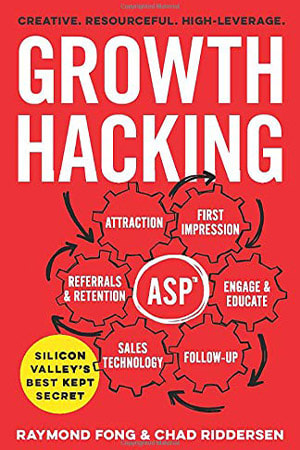
Growth Hacking – Silicon Valley’s Best Kept Secret is another excellent option for anyone who wants to get introduced to growth hacking. It’s written by Raymond Fong and Chad Riddersen. Raymond is a former engineer who later in his life discovered his passion for marketing and became a growth marketer and a consultant. Chad started his career in investment banking but ended up being a growth consultant for companies like Boeing and Dollar Shave Club.
Contrary to the traditional growth marketers, Chad and Raymond don’t think of growth funnels. Rather, they built their own framework and called it the Automated Sales Process (ASP). So what’s this? Basically, ASP is their take on deconstructing and analyzing the elements of a sales and value delivery cycle. You can get the idea of what that is from the book cover on the left.
The book offers real-life examples from some of the now-well-established companies. By understanding what worked for them -and why- you will be able to apply many of these practices to your own business. However, you will have to learn about the growth process and the growth mindset first, both of which are explained in the book.
| Chapter 1 | Chapter 2 | Chapter 3 | Chapter 4 | Chapter 5 | Chapter 6 | Chapter 7 | Chapter 8 |
|---|---|---|---|---|---|---|---|
| Growth Hacking Your Mind | Establishing and Automated Sales Process (ASP™) | Attraction | First Impression | Engage & Educate | Follow-Up | Sales Technology | Referrals & Retention |
6. Lean Marketing
More leads. More profit. Less marketing.
Author: Allan Dibs | Published: 2024 | Pages: 236
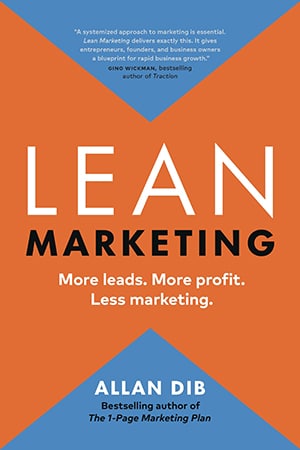
Allan Dib, the bestselling author of The 1-Page Marketing Plan, delivers another guide in Lean Marketing. This book is great for entrepreneurs and small business owners looking to simplify their marketing while achieving exceptional results.
The central premise of Lean Marketing is doing more with less. Dib outlines how to generate quality leads, boost profits, and eliminate wasteful marketing tactics that don’t deliver results. It’s filled with actionable advice on leveraging automation, optimizing conversion funnels, and identifying opportunities for growth.
Dib’s no-nonsense approach is evident in his focus on cutting through marketing noise. He emphasizes the importance of understanding your audience, crafting clear value propositions, and consistently measuring performance to ensure your efforts are aligned with your goals. Real-world case studies and practical tools make this book a hands-on resource for anyone eager to streamline their marketing efforts.
| FOUNDATIONS | FORCE MULTIPLIER 1: TOOLS | FORCE MULTIPLIER 2: ASSETS | FORCE MULTIPLIER 3: PROCESSES |
|---|---|---|---|
| Leaning Into Marketing | Your Marketing Nerve Center | Your Brand (Start with Buy) | Business Is a Team Sport |
| Who Are You People? | Programming Moist Robots | Your Flagship Asset | Email Marketing |
| What Are You (Really) Selling? | Artificial Intelligence | Your Website | Content Marketing |
| Your Intellectual Property | Keeping, Delighting, and Multiplying Your Customers | ||
| Metrics |
7. Hooked
How to Build Habit-Forming Products
Author: Nir Eyal | Published: 2014 | Pages: 336
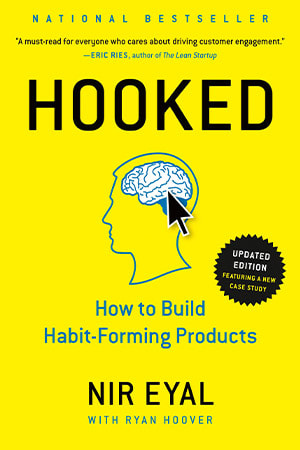
In growth marketing, retention has become the most important stage of the funnel. And one of the first thinkers to put retention in the spotlight so successfully was Nir Eyal. Nir is an expert in behavioral engineering, which is a fusion of psychology and technology. He’s also a professor at Stanford University, a tech startup founder, and investor.
In his book, Hooked, Nier introduces the Hooked model. As the name suggests, the model explains how it hooks users so they use the product again and again without thinking about it too much. As the author explains, the Hooked model has 4 Phases. The first phase is the Trigger, which is anything that sets behavior in motion. The second phase, Action, is that which is being done in expectation of the next phase, Reward. And, according to Eyal, there are three types of rewards: rewards of the tribe, the hunt, and the self. The fourth and last phase is Investment, the part where the user is asked to give back some of his time and get committed.
Hooked is a must-read for product managers, marketers designers, marketers, and start-up founders. It’s also a great book for anyone who is interested in knowing more about themselves by knowing more about the products they use – and how the products use them.
| Chapter 1 | Chapter 2 | Chapter 3 | Chapter 4 | Chapter 5 | Chapter 6 | Chapter 7 | Chapter 8 |
|---|---|---|---|---|---|---|---|
| The Habit Zone | Trigger (Phase 1) | Action (Phase 2) | Reward (Phase 3) | Investment (Phase 4) | The Morality of Manipulation | The Bible App Case Study | Habit Testing and Identifying Habit-Forming Opportunities |
8. The SaaS Playbook
Build a Multimillion-Dollar Startup Without Venture Capital
Author: Rob Walling | Published: 2023 | Pages: 200
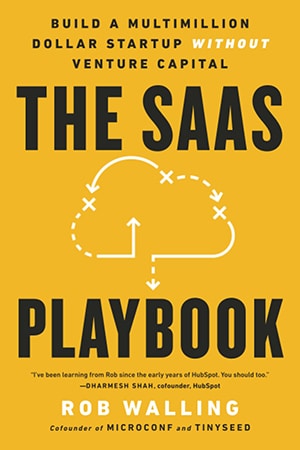
The SaaS Playbook is a masterclass in building your SaaS startup from scratch. Rob Walling covers everything from finding the right product-market fit and pricing strategies to scaling operations and maintaining profitability. He emphasizes the importance of starting small, validating your idea, and iterating based on customer feedback.
Wallin is a pioneer in the bootstrapped SaaS movement and is looking to educate entrepreneurs to build thriving software businesses without relying on venture capital. Accordingly, he draws from his extensive experience as a SaaS founder and the creator of MicroConf, a B2B SaaS community. What’s more, he shares stories from his own journey and other bootstrapped founders, offering clear strategies to navigate challenges like acquiring your first customers, managing churn, and growing your MRR (Monthly Recurring Revenue).
Whether you’re just starting out or already running a SaaS business, this book is a must-read for those who want to retain control, avoid the pitfalls of venture funding, and build a business on their own terms.
| The Playbook for Building a Multimillion-Dollar SaaS | Market | Pricing | Marketing | Team | 80/20 SaaS Metrics | Mindset |
|---|---|---|---|---|---|---|
| You Know What’s Cool? A Million Dollars | Strengthening Product-Market Fit | How Should I Structure My Pricing? | How Do I Find More Customers? | How Should I Structure My Team? | Which Metrics Should I Track? | How Do I Achieve Success? |
| What Is Bootstrapping, Really? | How Can I Compete in a Competitive Market? | Should I Offer Freemium? | Marketing Funnels | Hiring Managers | 3 High/3 Low Metrics Framework | Where Should I Focus My Time? |
| Why Focus on SaaS? | How Much Should I Worry about Competition? | Should I Ask for a Credit Card Up Front? | Business-to-Business SaaS Marketing Approaches | How Can I Hire Great People? | How Much Should I Worry about Churn? | Should I Raise Funding? |
| Why is SaaS the Best Business Model? | How Can I Build a Moat? | When Should I Raise Prices? | How Do I Know Which Marketing Approaches Fit My Business? | Should I Offer Equity, Stock Options, or Profit Sharing? | Am I Turning Speed Bumps Into Roadblocks? | |
| Achieving Escape Velocity | Should I Translate My Product into Other Languages? (And Other Common Mistakes) | How to Raise Prices | How Should I Structure Sales Demos? | Do I Need a Cofounder? | Where Can I Find Community? | |
| How Can I Avoid Burnout? | ||||||
| What Are Founder Retreats? |
9. Contagious
Why Things Catch On
Author: Johan Berger | Published: 2016 | Pages: 256

Growth hacking is known for its low (or no) budget potential. Startups and small businesses are not the Big 5 Tech; they are not even close in terms of money, connections, or operation. Yet companies like Dropbox, Airbnb, and Dollar Shave Club managed to grow without spending millions on promotion and advertising. Their little secret? Word-of-mouth marketing is a big component of growth and D2C marketing.
Jon Berger, the author of the book, delves into human psychology and the world of ideas. He demystifies virality and investigates what makes things popular. According to Jon, there are 6 basic principles that define virality and the science behind word-of-mouth. Whether you are a content writer, a copywriter, or most kinds of ‘writer’, or you are working for any media, including social, or looking for ways to make your product or idea catch on, Contagious is the go-to place.
The book is separated into 6 basic parts. The purpose of each part is to provide explanations for common phenomena, as well as answer the question it poses. In this fashion, in Chapter 2 which is about Triggers, you will read the answers to questions like ‘Which gets more word of mouth, Disney or Cheerios?’ and ‘Could where you vote affect how you vote?’. In the next chapter, Emotion, you will understand how anger is similar to humor. And in Chapter 5, Practical Value, you will learn ‘How an eighty-six-year-old made a viral -video about corn’, and ‘Why hikers talk about vacuum cleaners’.
| Chapter 1: Social currency | Chapter 2: Triggers | Chapter 3: Emotion | Chapter 4: Public | Chapter 5: Practical value | Chapter 6: Stories |
|---|---|---|---|---|---|
| Ants can lift fifty times their own weight | Which gets more word of mouth, Disney or Cheerios? | Why do some things make the Most E-Mailed list? | Is the Apple logo better upside down than right side up? | How an eighty-six-year-old made a viral -video about corn | How stories are like Trojan horses |
| Why frequent flier miles are like a video game | Why a NASA mission boosted candy sales | How reading science articles is like standing at the edge of the Grand Canyon | Why dying people turn down kidney transplants | Why hikers talk about vacuum cleaners | Why good customer service is better than any ad |
| When it's good to be hard to get | Could where you vote affect how you vote? | Why anger is like humor | Using moustaches to make the private public | E-mail forwards are the new barn raising | When a streaker crashed the Olympics |
| Why everyone wants a mix of tripe, heart, and stomach meat | Consider the context | How breaking guitars can make you famous | How to advertise without an advertising budget | Will people pay to save money? | Why some story details are unforgettable |
| The downside of getting paid | Explaining Rebecca Black | Getting teary eyed about online search | Why anti-drug commercials might increase drug use | Why $100 is a magic number | Using a panda to make valuable viralit |
| We share things that make us look good | Growing the habitat: Kit Kat and coffee | When we care, we share | Built to show, built to grow | When lies spread faster than the truth | Information travels under the guise of idle chatter |
| Top of mind, tip of tongue | News you can use |
10. Top 101 Growth Hacks
The best growth hacking ideas that you can put into practice right away
Author: Aladdin Happy | Published: 2015 | Pages: 132

For five months straight, Aladdin Happy, the author of the book, was collecting growth hacks. For 2 to 5 hours every day, he would gather growth hacks from all over the internet. Then, he would put them into action for his startup. After a while, Aladdin decided to share these hacks through a subscription service. As a result, 1700 subscribers were reading his content just 3 weeks later (with $0 in marketing budget). Seeing that there is an audience for that, he then put all these hacks together in one book and published it.
In Top 101 Growth Hacks you will read exactly what the title suggests: 101 growth hacks from product /market fit to referral and revenue. Accordingly, you will learn how to increase email opt-ins and your conversion rate. Whether ‘Money back guarantee’ or ‘Free trial’ works better. How to write a good copy that converts and headline formulas that work. And how to unlock viral marketing and hack offline word of mouth.
Be aware that many of these growth hacks have become obsolete since then. However, this doesn’t change the fact that many growth hacking examples can inspire you and help you with your out-of-the-box thinking. Nonetheless, if you end up reading Aladdin’s book and enjoying it, you might be also interested in his second book: TOP 101 growth hacks – 2: The best new growth hacking ideas that INSPIRE you to put them into practice right away.
| Chapter 1 | Chapter 2 | Chapter 3 | Chapter 4 | Chapter 5 | Chapter 6 | Chapter 7 | Chapter 8 | Chapter 9 |
|---|---|---|---|---|---|---|---|---|
| Before product/market fit (3 growth hacks) | Hustling (10 growth hacks) | Copywriting (8 growth hacks) | Acquisition (17 growth hacks) | Activation (19 growth hacks) | Retention (7 growth hacks) | Revenue (22 growth hacks) | Referral (14 growth hacks) | Other (1 growth hack) |
11. Ecosystem-Led Growth
A Blueprint for Sales and Marketing Success Using the Power of Partnerships
Author: Bob Moore | Published: 2024 | Pages: 240

If you’re tired of traditional growth strategies and want to explore a powerful new paradigm, Ecosystem-Led Growth will make a pretty interesting read. In this growth marketing book, Bob Moore, co-founder and CEO of Crossbeam, introduces a transformative approach to scaling businesses by harnessing the untapped potential of partnerships.
Moore outlines a practical framework for adopting an ecosystem-led strategy, emphasizing the importance of collaboration over competition. He explains how businesses can forge meaningful partnerships with complementary companies to unlock new opportunities, create seamless integrations, and expand market reach. Key concepts like partner mapping, co-marketing, and shared customer data are explained in detail, making this a hands-on resource for modern growth teams.
From aligning goals with partners to managing relationships effectively, Moore provides actionable insights that any business can apply, regardless of size or industry. Whether you’re a startup founder, sales executive, or working for a startup marketing agency, this book offers some necessary know-how tools and inspiration.
| Part 1. My $2.6 Billion Mistake 5 | Part 2. The Ecosystem Revolution | Part 3. Beginning Your ELG Journe | Part 4. The ELG Playbooks |
|---|---|---|---|
| Muscle Memory and Scar Tissue 7 | Decoding the Confusing Language of Partnerships | Is ELG Right for Me? | The ELG Playbook Map |
| Disruption Is Cool Until It Happens to You | Why Legacy Partnerships Were Set Up to Fail | Getting Buy- In for ELG | Ecosystem Development: Populate Your Partner Ecosystem with Winners |
| How Partner Ecosystems Saved My Career | The Ecosystem Data Layer Arrives | Overcoming Security and Privacy Objections | Ecosystem- Led Marketing: Fill Your Funnel with Ecosystem Qualified Leads |
| Why Now? The Disruption of Growth as We Know It | Powering Up Your Account Mapping Matrix | Ecosystem- Led Sales: Close Bigger, Better Customers Faster | |
| Ecosystem- Led Customer Success: Eliminate Churn and Grow Accounts |
12. Blitzscaling
The Lightning-Fast Path to Building Massively Valuable Companies
Authors: Reid Hoffman, Chris Yeh | Published: 2018 | Pages: 288
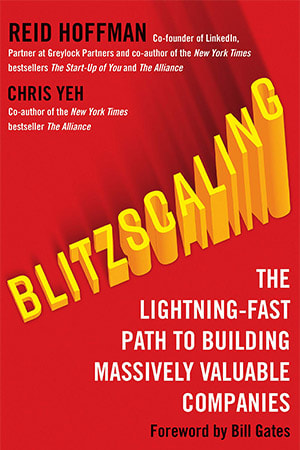
Blitzscaling is looking to answer one question: what separates the startups that start growing but then disappear from the ones that grow to become global giants? The book introduces a set of techniques for scaling up any tech startup. According to the authors, Hoffman and Yeh, the objective of Blitzscaling is not to help you go from zero to one, but rather to go from one to one billion. As quickly as possible.
This growth hacking book is inspired by the popular class at Stanford Business School that Hoffman and Yeh were lecturing. During those classes, they would reveal how to navigate the necessary shifts and the challenges that arise at each stage of a company’s life cycle. Accordingly, some of the topics they would delve into are how to design business models for igniting and sustaining relentless growth; strategies for hiring and managing, and how the role of the founder and company culture must evolve as the business matures.
Whether you run a business with ten employees or ten thousand, Blitzscaling is an essential playbook for winning in a world where speed is the ultimate competitive advantage.
| Part 1. What is Blitzscaling? | Part 2. Business model innovation | Part 3. Strategy innovation | Part 4. Management innovation. Eight key transitions | Part 5. The broader landscape of Blitzscaling | Part 6. Responsible Blitzscaling |
|---|---|---|---|---|---|
| Software is eating (and saving) the world | Designing to maximize growth: the four growth factors | When should I start to Blitzscale? | Nine counterintuitive rules of Blitzscaling | Blitzscaling beyond high tech | Blitzscaling in society |
| The types of scaling | Designing to maximize growth: the two growth limiters | When should I stop Blitzscaling? | The never-ending need for change | Blitzscaling within a larger organization | Framework for responsible Blitzscaling |
| The three basics of Blitzscaling | Proven business model patterns | Can I choose not to Blitzscale? | Blitzscaling beyond business | The response spectrum | |
| The five stages of Blitzscaling | The underlying principles of business model innovation | Blitzscaling is iterative | Other Blitzscaling regions to watch | Balancing responsibility and velocity as the organization grows | |
| The three key techniques of Blitzscaling | Analyzing a few billion-dollar business models | How Blitzscaling strategy changes in each stage | China: The land of Blitzscaling | ||
| How the role of the founder changes in each stage | Defending against Blitzscaling | ||||
13. Ready, Set, Growth Hack
A Beginners Guide to Growth Hacking Success
Author: Nader Sabry | Published: 2021 | Pages: 216
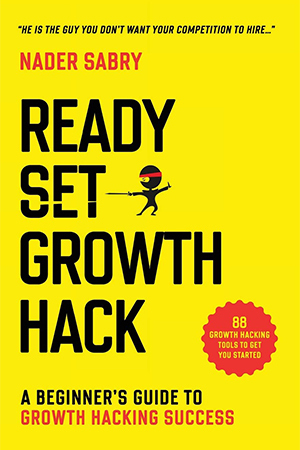
One of the latest additions in the growth hacking bibliography, Ready, Set Growth Hack is a blueprint to create and turn your business into a growth engine. You will learn everything from what is growth hacking, why is it vital, how it works, and how to start your first growth hack. The content is based on proven strategies with 88 tools and 50 examples, you can apply growth hacking techniques immediately.
This growth hacking book’s author, Naber Sabry, has been building startups, growing corporations, and advancing governments for over two decades. After founding companies from start to exit, Sabry has raised $120 million mastering growth hacking over the past 25 years. As a strategist, he can find the reasons that make an organization work or not work and he shares all the elements that can have a significant impact on your business.
From start to finish, Ready, Set Growth Hack is a structured and practical approach for anybody to grow their organization. You don’t need any prior knowledge in marketing, tech, or business to understand how to use the power of growth hacking, so this book can also be your first one on the subject.
| Chapter 1: Introduction | Chapter 2: Growth Hacking Mindset | Chapter 3: Ready to Discover and Unlock Your Strategy | Chapter 4: Set Your Experiments and Development Ideas | Chapter 5: Growth Hack and Scale Your Apporach |
|---|---|---|---|---|
| What is growth hacking, why it is essential and how it is rooted in asymmetrical warfare | How growth hacking works, how growth hackers think, and how you approach growth hacking | How to prepare for growth hacking by profiling your growth challenges | Start experimenting, discovering and developing growth hacks | How to implement, and scale growth hacks for full-scale operations |
14. Product-Led SEO
The Why Behind Building Your Organic Growth Strategy
Author: Eli Schwartz | Published: 2021 | Pages: 264
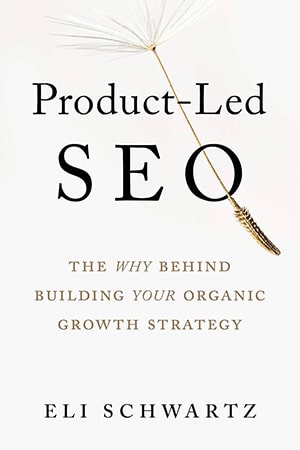
Product-Led SEO is perfect for product managers, organic marketing pros, and growth teams looking to build a product that not only meets user needs but also generates scalable, sustainable traffic through search engines. In his book, Eli Schwartz, a seasoned SEO expert and growth strategist, unveils a new approach to driving organic growth by combining SEO with product development.
Schwartz outlines a step-by-step framework for integrating SEO into your product development process, helping you prioritize SEO-friendly features and content that can naturally drive organic growth. Unlike traditional methods that focus on SEO components like keyword rankings and backlinks, Product-Led SEO emphasizes building a product experience that inherently attracts search traffic by providing value, solving problems, and aligning with user intent.
If you’re looking to future-proof your SEO strategy and build a product that grows itself, Product-Led SEO provides the blueprint to make it happen.
| Principle 1: Insight | Principle 2: Identity | Principle 3: Innovation | Now Apply It: Integrate and Execute |
|---|---|---|---|
| Maniacally Focus on the End Customer | Design and Align Value Propositions | Create, Test, and Learn (Strategy & Process) | Upstream Marketing 7-Step Approach |
| Define Your Purpose - To Whom? For What? | Build and Extend the Brand | Aim 'Em, Don't Tame 'Em (Creativity & Culture) | Upstream Marketing Application |
15. Upstream Marketing
Unlock Growth Using the Combined Principles of Insight, Identity, and Innovation
Authors: Kristin Kurth, Tim Koelzer | Published: 2021 | Pages: 300
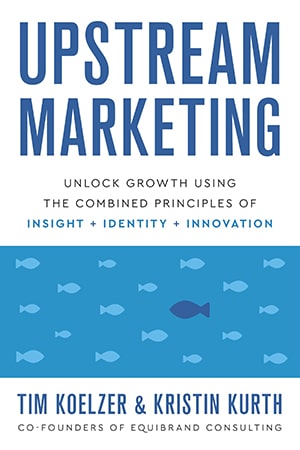
In their book, Kurth and Koelzer argue that traditional marketing often focuses too much on short-term, reactive tactics—what they call “downstream marketing.” Instead, they advocate for a more proactive, upstream approach that shapes strategy by gaining deep insights into customer needs and aligning your brand identity with those insights.
Upstream Marketing emphasizes the importance of understanding the market landscape, developing unique value propositions, and continuously iterating on your offerings to stay ahead of the curve. Through a mix of practical tools, frameworks, and case studies, the authors offer actionable strategies for businesses at any stage.
For those seeking to unlock the full potential of their brand and accelerate growth, Upstream Marketing is a great read, offering a strategic, holistic approach to marketing that goes beyond quick wins.
| Principle 1: Insight | Principle 2: Identity | Principle 3: Innovation | Now Apply It: Integrate and Execute |
|---|---|---|---|
| Maniacally Focus on the End Customer | Design and Align Value Propositions | Create, Test, and Learn (Strategy & Process) | Upstream Marketing 7-Step Approach |
| Define Your Purpose - To Whom? For What? | Build and Extend the Brand | Aim 'Em, Don't Tame 'Em (Creativity & Culture) | Upstream Marketing Application |
Top Growth Hacking Books to Read – Conclusion
Do you have any favorite growth hacking books we didn’t mention?
Please let us know with a comment!
Also, keep an eye out for digital ways to learn more about growth hacking and digital marketing. With a simple Google search, you will find great resources from digital marketing blogs that publish excellent marketing articles – for free.
Of course, if you want to go beyond growth hacking, make sure to take a look at other books that can help you with business. Like some of the best sales books or the top leadership books in the market.
See you next time & keep on learning!
Was this article useful?
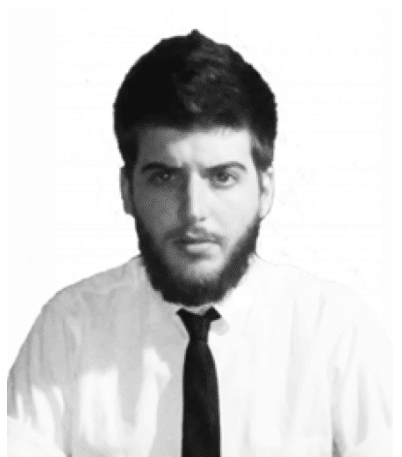
I write for GrowthRocks, one of the top growth hacking agencies. For some mysterious reason, I write on the internet yet I’m not a vegan, I don’t do yoga and I don’t drink smoothies.

